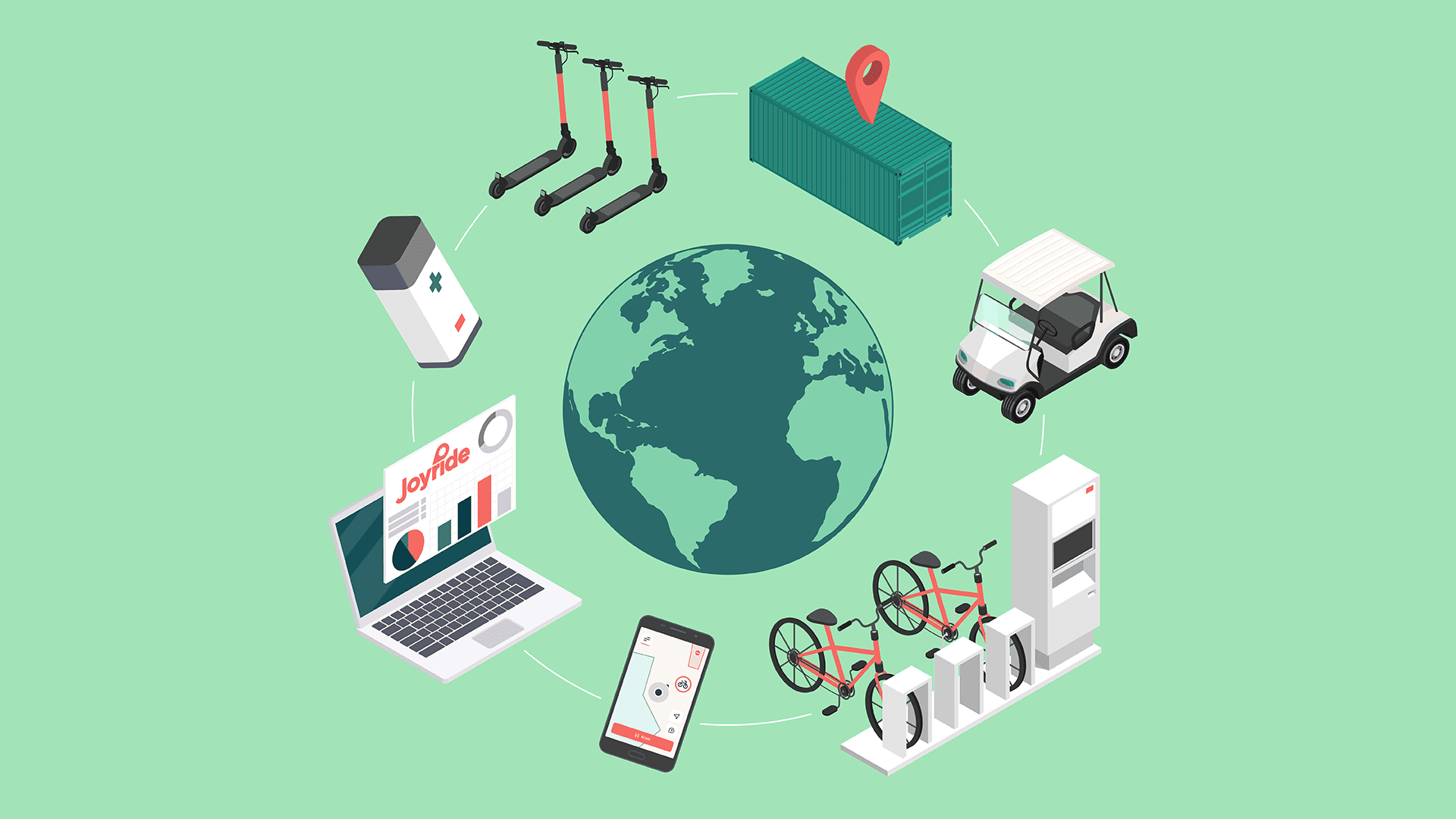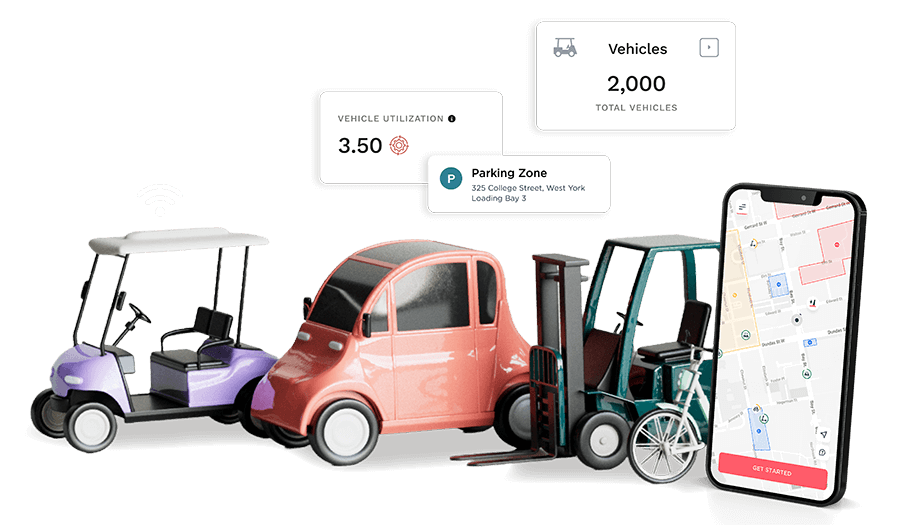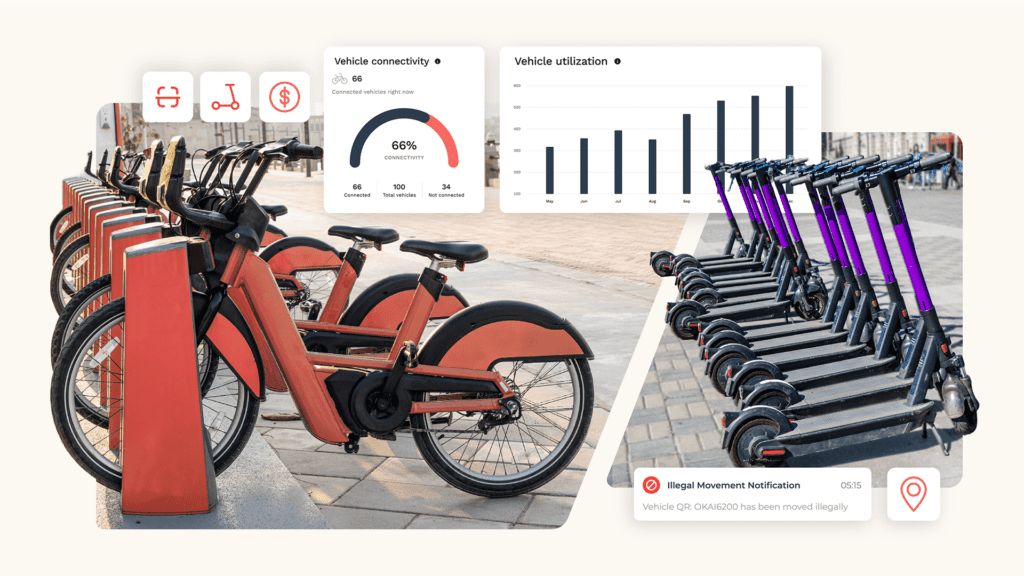Currently, transport represents about 30% of all carbon dioxide (CO2) emissions in developed countries, prompting the European Union and other governing bodies to actively reduce greenhouse gas emissions by 55% in the next five years. This requires sustainable and smart mobility and transport systems, powered by electric bikes, scooters, golf carts, minicars, e-cargo bikes and more.
If you’re an EV or micromobility supplier, or run an electric mobility business, you’re already contributing to the global mission of reducing our collective carbon footprint.
Small vehicles are making a big, big impact on the environment. Take minicars, which have the power to reduce CO2 emissions by 11%. Or e-bikes, which only generate about 22 grams of CO2 emissions per kilometer (compared to 271 grams of CO2 emissions per kilometer traveled by gas-fuelled cars).
To really harness the sustainable impact of your connected vehicles, it’s time to consider best practices. In honor of Earth Day on April 22, let’s explore five actionable ways to elevate the eco-friendliness of your electric mobility business:
- Electrify your operation
- Rock a docking station
- Invest in the best equipment
- Commit to circular supply chain
- Make data-driven decisions
1. Electrify your operation
It’s no secret that electric vehicles (EVs) are more sustainable than their gas-guzzling counterparts. But electrifying your fleet is just one piece of the puzzle. Think about every aspect of your operation that relies on fossil fuels and explore opportunities to electrify or offset emissions.
Take, for example, the process of collecting, charging and redistributing fleet vehicles—a task often carried out using fossil-fuelled vehicles. By incorporating electric cargo bikes for battery swapping and electric/hybrid cargo vans for transportation, you not only make this process more eco-friendly but also significantly more efficient.
According to Voi’s Life Cycle Assessment, using a cargo vehicle to swap their fleet’s batteries enables a 93% reduction in operational emissions as well as increased fleet efficiency as there’s virtually no downtime for charging.
If it’s available in your operating area, switching to renewable energy sources, such as solar or wind power, to power your warehouse is another great initiative.
What’s more, businesses that invest in renewable energy projects, such as installing solar panels, may qualify for tax credits, further enhancing the financial benefits.
2. Invest in the best equipment
Investing in durable vehicles built for commercial use is a smart move for fleet operators looking to boost sustainability and reduce long-term costs. This means a larger cost upfront, but trust us on this one; temptingly cheap scooters will not stand up to the abuse of public-sharing.
A fleet of purpose-built e-scooters from (now in their 5th-10th generation) will require far less maintenance and experience fewer breakdowns compared to lower-quality models. This translates to fewer service intervals, less downtime for repairs, and ultimately, a more efficient and reliable vehicle sharing system.
Purchasing a new fleet from a leading industry supplier like Segway or Okai also enables you to tap into years of hardware iteration–largely paid for by the mistakes and learnings of Bird, Tier and other large micromobility service providers. The latest e-scooter models are expected to last more than five years thanks to higher quality, modular parts and swappable batteries.
Pro tip! Head over to our full B2B vehicle marketplace on Joyride Garage to buy and sell the best electric vehicles, parts and equipment on the global market.
3. Rock a docking station
Today’s electric scooters have better kickstands than their historical counterparts but publicly available vehicles are naturally going to take a beating. A popular low-cost solution is to install dedicated e-scooter and/or e-bike racks which keeps vehicles tidy and provides a secure parking location.
A step further is to install docking stations with charging capabilities, which not only keep vehicles upright, but regulate the distribution and charging of the fleet. This means less time (and fuel) spent shuttling batteries and vehicles.
Investing in smart charging technology allows operators to dynamically adjust energy usage based on demand and time of day, effectively reducing electricity waste and lowering operating costs.
Plus, certain stations can be outfitted with solar panels to harness renewable energy and further reduce energy consumption.
4. Repurpose, refurbish and recycle fleet vehicles
Vehicle production typically accounts for roughly 90% of a fleet’s lifetime emissions, so increasing vehicle lifespan should be a key focus of a sustainability or climate action plan. When it’s time to update your fleet due to upgraded technology, consider selling or donating decommissioned vehicles. Potential buyers include bike museums, local non-profit organizations, and other fleet operators seeking low-cost equipment or parts.
When vehicles reach the end of their life cycle, collaborating with specialized recycling programs provided by automobile factories, research centers, and universities is a good option to ensure responsible disposal, and avoid sending usable materials to the scrapyard.
Lithium-ion batteries also have a lifespan, but unlike some other scooter components, most of the valuable materials within can be recycled and reused. Companies like Li-Cycle handle end-of-life EV batteries and are actively collaborating with operators to define battery recycling best practices practices for the electric mobility supply chain.
Repairable batteries and domestically manufactured vehicles are other sustainable choices worth investigating, but since getting hardware in the first place can be a complicated process, choosing more expensive and complex options may not be realistic for your business.
5. Make data-driven decisions
As the old saying goes, if you can measure it, you can manage it. This is precisely why a fleet management platform is so powerful.
The Joyride backend fleet-tracking dashboard uses vehicle telematics and IoT technology to collect real-time data on device locations, state of charge and maintenance needs. Access to these metrics in an easy-to-understand format enables fleet managers to identify areas for improvement, in all areas of their operations.
Additional benefits come in the form of IoT-enabled features; like remote diagnostics and over-the-air updates allow for proactive vehicle maintenance. You can even analyze popular routes and rental locations, and leverage these insights to strategically place e-scooters and bikes where they’re most needed, reducing unnecessary energy consumption and emissions associated with vehicle redistribution and battery swapping.
In cases where emissions can’t be eliminated, fleet operators can calculate their carbon footprint based on vehicle usage data and invest in offsetting initiatives like reforestation or renewable energy projects.
Bonus tip: Go the extra mile
At the end of the day you’re running a business, so why not turn your eco-friendly efforts into a marketing campaign? Don’t underestimate the power of education in driving sustainable behavior change. By providing your customers with resources and information about the environmental benefits of electric mobility, you’re one step closer to creating a community of advocates who share your commitment to sustainability.
Together, let’s make every day Earth Day by embracing sustainable practices and leading the charge towards a greener, more eco-friendly future for all.
Powering sustainability
At Joyride, we’re not just in the business of providing mobility solutions; we’re driving a global movement towards a sustainable transportation ecosystem. Every electric bike, scooter, golf cart, mobility scooter and mini cart connected to our platform represents a victory in the fight against climate change.
Ready to join the movement? Get in touch with us to learn how Joyride can bring your electric mobility business to life.







